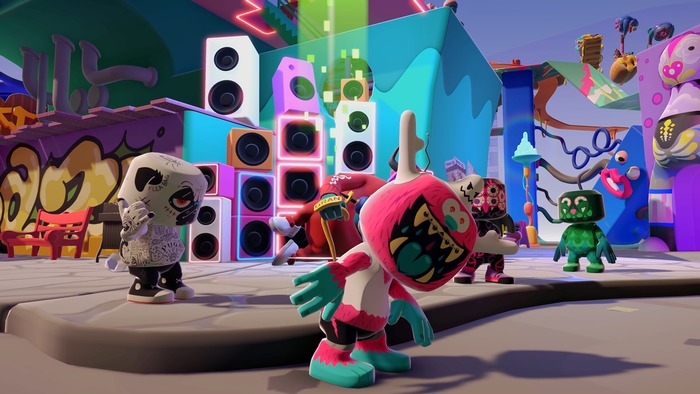Numerous video games incorporate in-game currency, such as “Fortnite’s” V-bucks and “Roblox’s” Robux. And this does have its charm. However, in the world of gaming, more and more popular platforms introduce cryptocurrencies as the main payment method. Crypto games are becoming more and more popular, attracting thousands of players every day.
Blockchain technology and smart contracts facilitate the functionality of these crypto games, enabling payment to players and secure data storage. But how does this work? Why crypto gaming is becoming that popular? Let’s uncover the secrets!
Understanding the Dynamics of Crypto Gaming
In order to understand crypto gaming, you must know how it works, and what are the dynamics behind it.
How Does Crypto Gaming Operate?
Crypto games frequently leverage non-fungible tokens (NFTs) and cryptocurrencies, employing specific gaming tokens as rewards. For instance, “My Neighbor Alice” rewards players with ALICE tokens for participation, which can be used to acquire in-game assets, NFTs, and avatars.
Basically, it is just like any other currency available in the different games (such as the Robux in Roblox), but crypto. This makes it much easier for the crypto owners to operate their money, without having to exchange them all the time.
The blockchain gaming ecosystem combines elements of web2 and web3 technology. Centralized servers store gaming environments and, in some instances, player data. Distributed ledgers store crypto gaming coins and NFTs representing virtual items.
There are two main dynamics of the crypto gaming:
Play-to-Earn Mechanism
Play-to-earn games motivate players through rewards in cryptocurrency and NFTs, bridging the gap between entertainment and profitability. These rewards hold real-world value and can be traded on the secondary market.
The Play-to-Earn (P2E) gaming model, where players can earn rewards for in-game achievements, is a key component of the broader GameFi landscape. GameFi extends beyond P2E, incorporating decentralized finance (DeFi) elements like blockchain assets, staking, and virtual economies within games, creating a dynamic intersection between gaming and financial innovation.
Yes, these games do require money to be invested, but the best part is that the rewards and winnings are in crypto and NFT, which makes them much more appealing for the players. Imagine – earning crypto while playing Roblox, sounds interesting, right?
Earning Assets as a Player
Players earn assets through various avenues, such as winning crypto or NFTs based on success metrics. For example, a blockchain trading card game may reward players with cryptocurrency tokens for defeating opponents. Additionally, leveling up characters can yield in-game items, often minted as NFTs for sale on the secondary market.
And when considering earning crypto and NFTs as a player, here comes the idea of online gambling…
Cryptocurrency Gambling
Crypto gambling games, resembling traditional counterparts, reward players with cryptocurrency instead of fiat currency. There are many crypto casinos available, and many online betting platforms which have incorporated cryptocurrencies as a payment method. And more and more people are choosing it! Why? According to betting experts at Casinos Not On Gamstop, the allure lies in the numerous advantages.
Crypto games reward players with cryptocurrency or NFTs, owned and tradable for stablecoins or fiat currency. Though initial earnings may be modest, holding assets offers the potential for increased value over time. However, asset values can also decrease, so here we have both great and not-that-great sides, right?
How to Play Games with Crypto?
If you want to play games with crypto, there are some steps you should take:
- Choose the game you want to play – is it going to be a popular gaming option, or are you going to play casino games and gamble with crypto?
- To embark on crypto gaming, a cryptocurrency wallet is essential.
- Identify games of interest, determine the required crypto wallet—e.g., MetaMask for “Axie Infinity” on the Ethereum blockchain—and create an account on the game’s website.
- Some games necessitate software, while others offer web-based environments. Ensure you know this and that you have chosen the best option for you
- Certain games may require purchasing digital assets, such as character NFTs or governance tokens, before gameplay.
Once you have followed the steps, you can start betting and enjoying the games you want to enjoy!
Of course, as with anything else, there are also risks in crypto gaming.
- Risks Associated with Token Transactions – Sending tokens to the wrong wallet poses a risk, especially when playing on different blockchains. Double-check wallet addresses to prevent irreversible token loss.
- Scams, Hacks, and Vigilance – Protect your wallet passphrase to prevent unauthorized access and potential token theft. Be cautious of games with seemingly unrealistic promises to avoid falling victim to scams or hacks.
- Asset Value Fluctuations – The popularity decline of a game often results in decreased asset values. “Axie Infinity” serves as an example, with a substantial drop in players and native token value.
- Legal Considerations – Ensure the legality of decentralized gaming in your region to avoid potential legal issues related to online gambling regulations.
Anticipating the Future of Crypto Gaming
The crypto gaming ecosystem provides an avenue for players to earn while indulging in their favorite games. Web3 games offer enhanced security and governance participation. However, players must remain vigilant against scams, fluctuating asset values, and potential hacks. A foundational understanding of blockchain and cryptocurrency wallets is crucial for active engagement in the crypto gaming landscape.
In the future, we expect crypto gaming to become much more popular. We expect it to become the new reality because gaming with digital money is much more easier than with cash, right?


